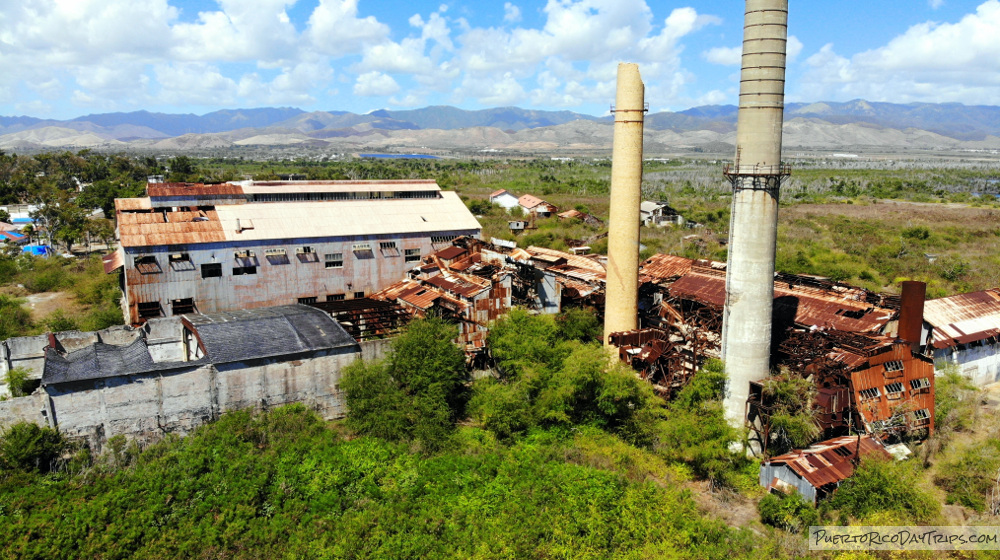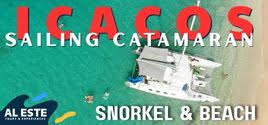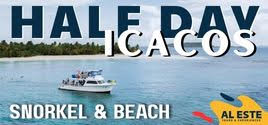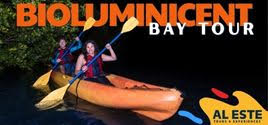History and Nature Combine at Aguirre Sugar Mill
As with many islands in the Caribbean, sugar was once the primary cash crop here in Puerto Rico. The Aguirre Central Sugar Mill, located in the town of Salinas, had a thriving “company town” around it to support the employees of the mill. But when the sugar industry declined — they stopped growing sugar cane commercially in Puerto Rico and the mill closed — the town and large tracts of waterfront property was left to waste away. Luckily, The Jobos Bay National Estuarine Research reserve has acquired much of this area and made a nice nature reserve there. Today, you can enjoy nature and check out what is left of the sugar town.
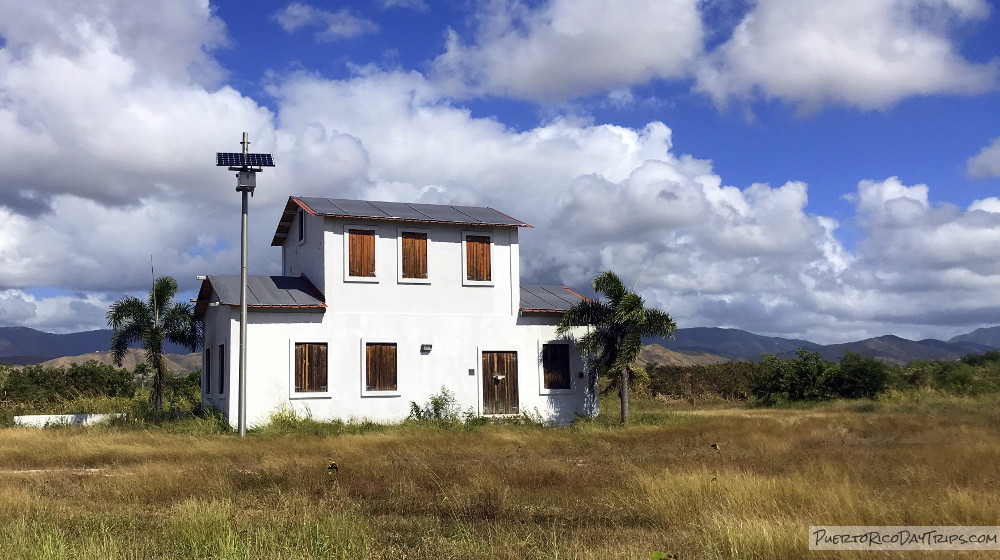
The Aguirre Central Sugar Mill & Company Town
The Aguirre Central Sugar Mill opened as a small plantation in the mid 1800’s. In 1899, it and surrounding lands were acquired by a US company and the center grew and modernized. In it’s peak period, the complex included sugar plantations, train system, the sugar mill to process and refine the sugar, as well as administrative, commercial, institutional, recreational and residential areas/buildings. As time went on, the owners had modernized and upgraded machinery and systems so much, they could increase production and profit and limit personnel. It was one of the most efficient centers around. It continued to grow and modernize and improved it’s production.
The mill was so prosperous at one time that an entire town grew up around it. The Aguirre company town was almost autonomous, having a train system, schools, a hospital, hotel, pool, golf course, a Post Office, stores, and housing for workers right around the mill.
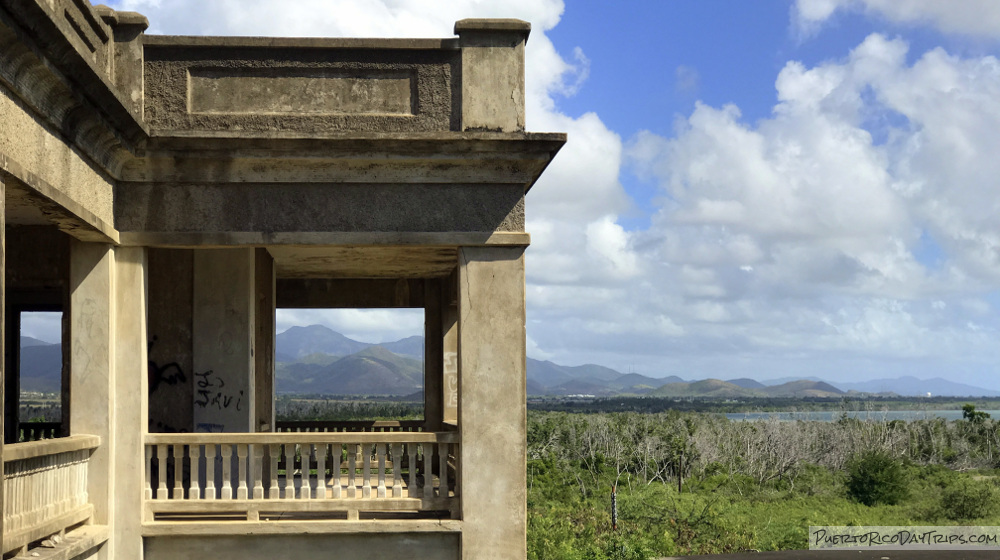
In the late 1950s, the sugar industry began to decline as the island started to promote industrialization (moving people from farming areas to city areas), and as the sugar market declined (sugar was now available cheaper from other islands). The Aquirre Central still operated for years, but wasn’t profitable. In the 1970s the Puerto Rican government stepped in to try and save the market, but it was a lost cause.
In 1981, some of the land from the Aguirre Central was incorporated into what is known as the Jobos Bay National Estuarine Research Reserve. The current Jobos Reserve’s Visitor Center/Office/Museum is in what used to be the old town club house, next to the vacant hotel.
When the mill closed in 1990, the town’s prosperity had also declined. Most of the buildings were either demolished, left to ruin, or restored/converted into houses or historic sites. In 2002, Aguirre Historic District was included in the National Register of Historic Places.
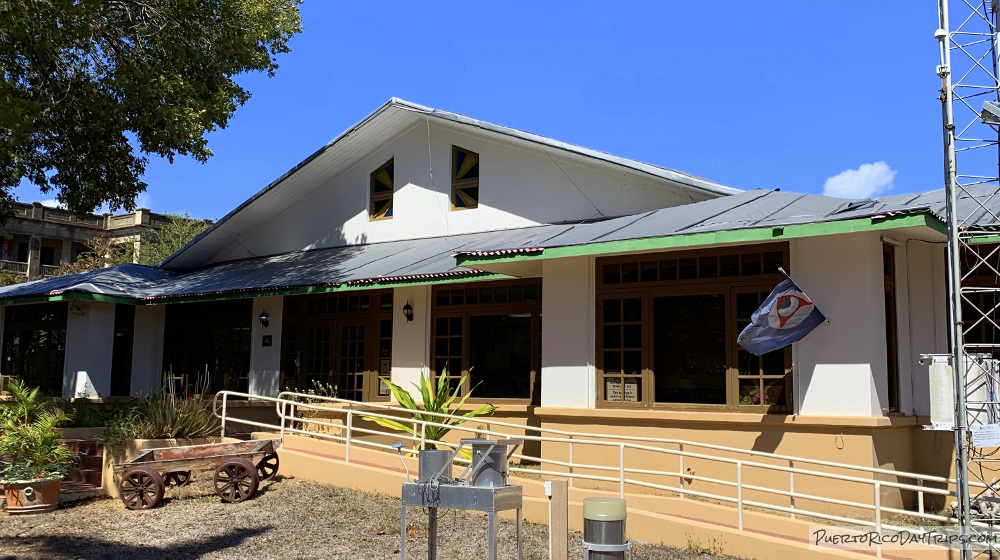
The Jobos Bay National Estuarine Research Reserve
The Jobos Bay National Estuarine Research Reserve comprises 2,800 acres of coastal land and the Jobos Bay area, and has recently acquired additional land and water shed areas. It is run by the PR DNRA in cooperation with the Federal NOAA. Here, they do research, education, monitoring and preservation of the land and animals/plants that call that area home.
The Reserve covers diverse habitats including salt flats, sea grass beds, mudflats, shallow lagoons, coral reefs, offshore cays, and mangrove islets and forests. The Reserve is home to many species of mammals, birds, reptiles, amphibians, fish, marine invertebrates, and land and marine plants. It is especially important because it is home to some endangered species like the yellow-shouldered blackbird, hawksbill sea turtle, brown pelican, and West Indian manatee. The area is also enjoyed by people for marine recreation, fishing, and ecotourism (bird watching, hiking, photography, biking).
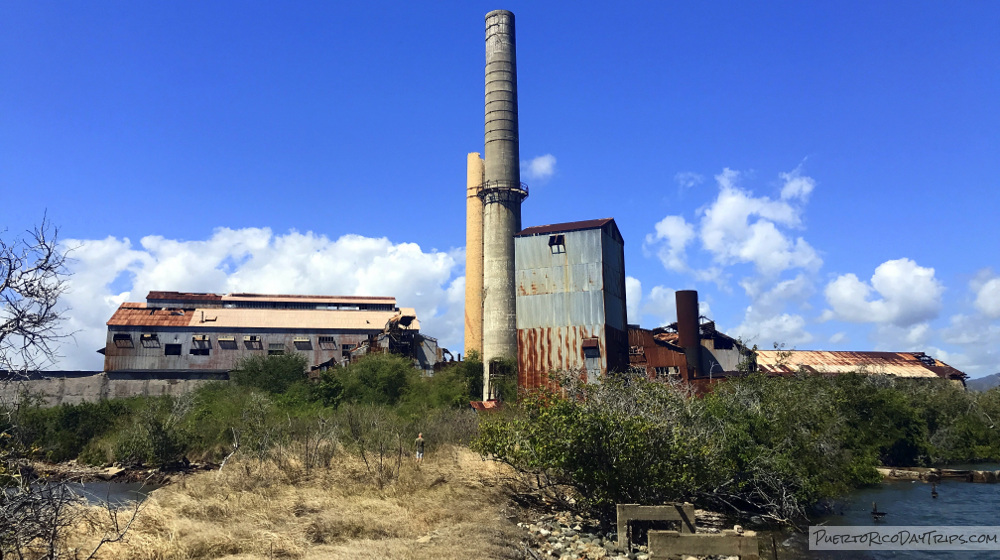
Our Visit
The old Aguirre Sugar company town, and the current Jobos Bay National Estuarine Research Reserve are located between the municipalities of Salinas and Guayama, on the south east coast of the island. As you drive down Route 705, you will notice train tracks, and then other houses and buildings, some restored, some in disrepair.
We parked and stopped in to the Jobos Bay National Estuarine Research Reserve Welcome center/museum. The facilities that are available in the Jobos Bay Reserve include an educational exhibit area, a visitors’ center filled with information, a research library, conference facilities, and a laboratory. It is air-conditioned and has a restroom.
We checked out the displays, talked to the friendly people inside, and got an idea of the trails (they big map on wall, and some of the trail maps are available online). There are interpretive trails located in various places of the Reserve and surrounding waters – on Cayos Caribe, Jagueyes Forest, and Mar Negro Lagoons.
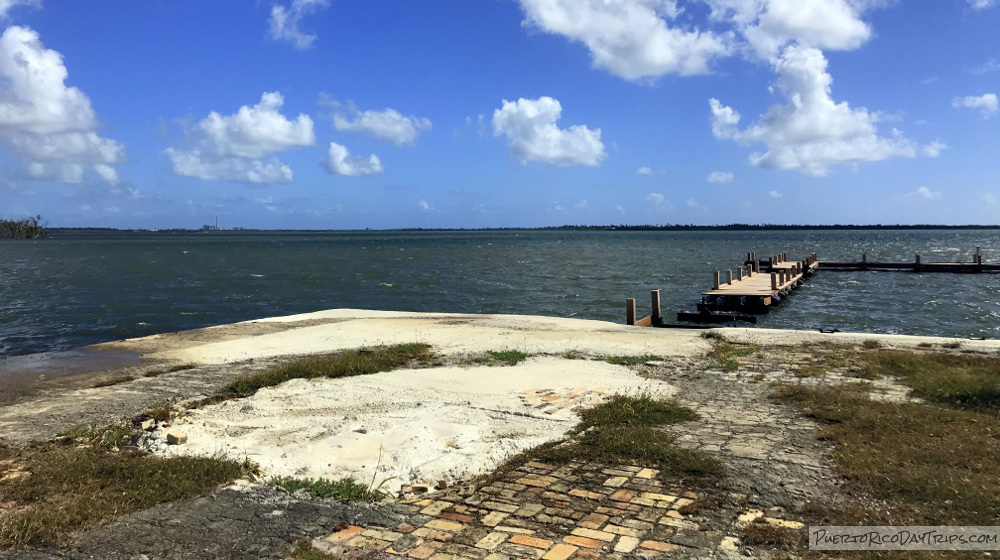
We did the Salt Flat trails, which starts right in the parking lot of the visitor center. You can walk or bike. There is one trail that goes to the restored Aguirre Train Station building, and some that go around the salt flats and mangroves, and to the dock. The trails are open even when the visitor center is closed.
Note that the trails are through brush, so there is no shade, and it is HOT. Bring water, apply sunscreen, wear hats and closed-toe shoes (sneakers are good) as these are dirt trails and there are rocks and other sharp objects on the ground. You can do as much or as little as you want. There are the main trails, some side trails, and dirt roads.
We walked a few of the trails, to the dock, around a lagoon. It was pretty and peaceful. Lots of birds, plants, and flowers to see.
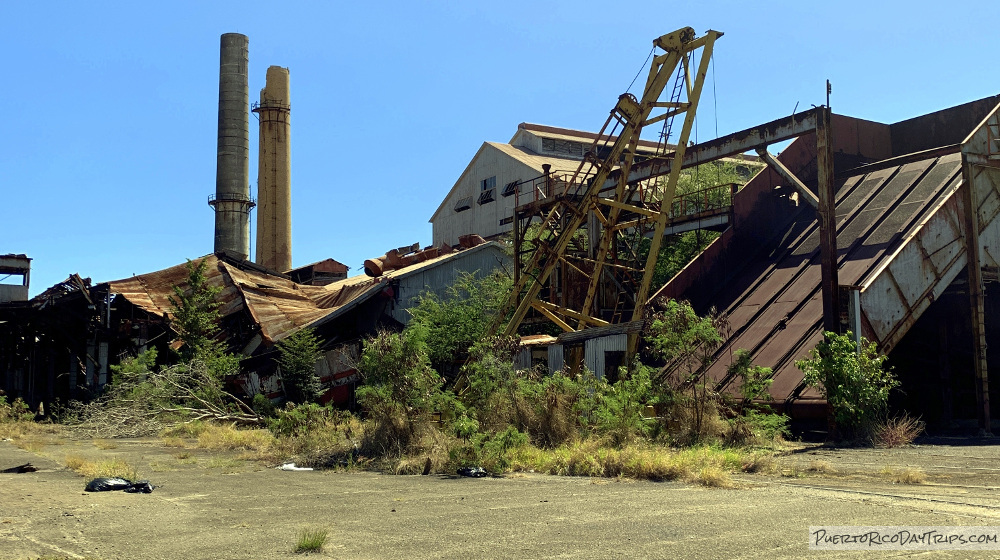
Once we were done exploring the nature areas, we took one of the paths over to the Aquirre Sugar Mill ruins. Be careful here. This is not a place for kids! There are open pits all over the ground (from the cane conveyor belt), and rusted metal and broken glass everywhere.
If you choose to wander around, you will find some really cool things. But it is a bit unnerving, with all the creaks and moans of the rusting metal blowing in the wind. It is dangerous, but interesting. I wish someone would try to preserve some of it, and provide some education about the sugar industry, the mill, and the history of this area.
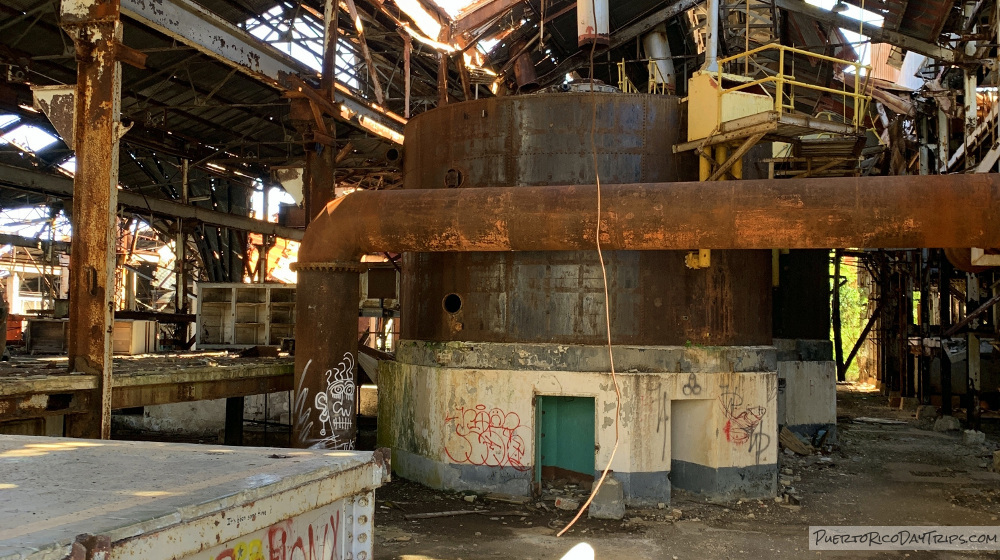
You can also walk up the road past the visitor center and see if the hotel ruins are accessible. We checked that out, too. It was neat but be warned, when we went, the graffiti inside was a bit “graphic”!
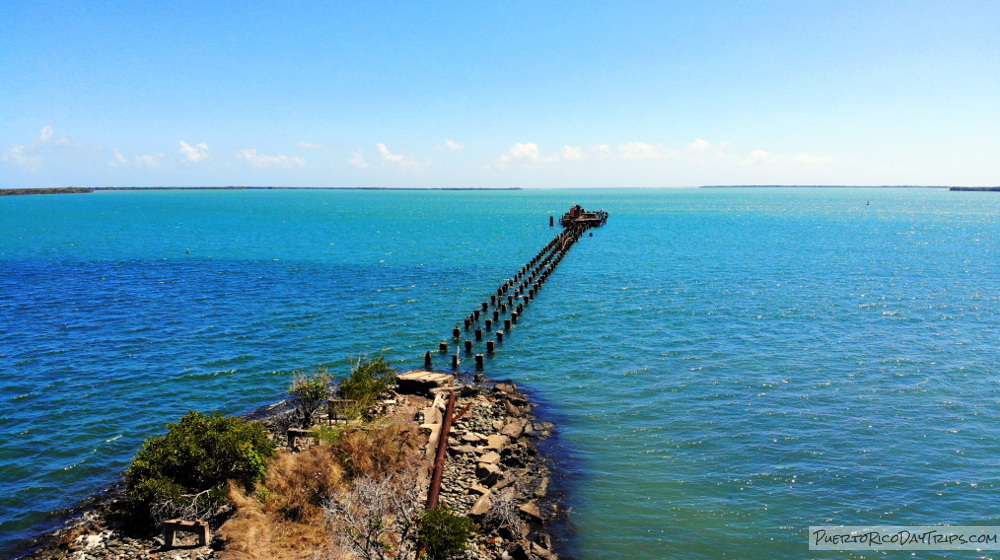
Details
There is no charge for the visitor center, nor the trails.
The Jobos Bay National Estuarine Research Reserve visitor center is open Monday to Friday from 8:00am to 3:30pm. Possibly closed noon to 1pm for lunch. Closed on weekends.
You can call the Jobos Bay National Estuarine Research Reserve visitor center at 787-853-3569 or 787-853-4617 for more information.
You can get more information on their Facebook page, or the DRNA web site.
The Jobos Bay National Estuarine Research Reserve visitor center and Aguirre Sugar Mill ruins are located on Route 703 at KM 2.3 in Salinas.
Click on a placename below to view the location on Google Maps ...
Puerto Rico Day Trips LLC assumes no responsibility regarding your safety when participating in the activities described in this article. Please use common sense! If your mother or that little voice in your head tells you that you are about to do something stupid … then don't do it!

